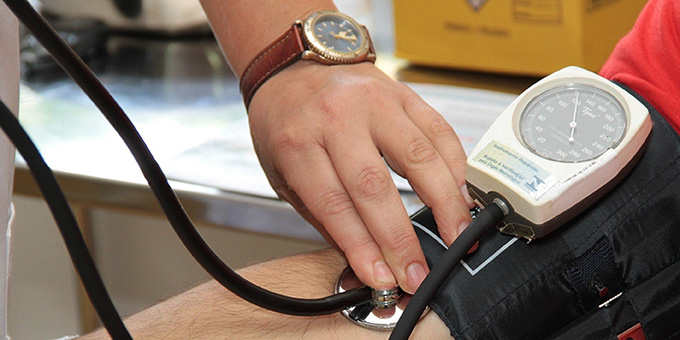11
July, 2018
A recent surge of awareness has struck the United State’s school system with a public health problem that many were led to believe was solved several decades ago. The problem is lead — a toxin that has entered the drinking water of an estimated 10-20% of public school systems in the US, according to Richard Maas, the former Co-director of the Environmental Quality Institute at the University of North Carolina-Asheville.
Lead is harmful to various aspects of human health, especially in children, and can result in lowered IQ, behavioral problems, and brain damage. According to the Environmental Protection Agency (EPA) and Centers for Disease Control and Prevention (CDC), there is no safe level of lead in drinking water. Given the severity and commonality of this issue, it is imperative that schools prioritize this immediately to ensure the safety and well-being of their students and staff.
How Does Lead Enter My School’s Water?
First, it is important to note that there is no direct federal law that mandates US schools to test their building’s water for lead. This may come as a surprise, but the only test required from a federal level is under the Safe Drinking Water Act (SWDA), which only covers the testing conducted at the local treatment center as well as a small number of random tests conducted throughout the community.
There are some policy changes occurring from a state and district level. For example, New York Governor Andrew Cuomo implemented legislation that requires every New York school district to test their water for lead. However, for most other schools, it’s their decision whether or not to test the water for unsafe levels of lead.
The challenge is identifying the source of lead, which typically derives from the distribution system, as opposed to the public water source. What’s most common is lead leaching into water from the service line (the intermediary pipe between the school building and public main), the internal pipes, or fixtures. While one can consume lead through a number of sources, the EPA estimates that about 20% or more of a person’s total exposure comes from drinking water.
What Are the Health Effects of Consuming Lead in Drinking Water?
It’s long been known that lead is a health toxin with a myriad of dangerous symptoms, especially to young children.
Lead is persistent and bioaccumulates in the body. Upon making its way into the body, it competes for absorption with calcium, where it is eventually sent to the brain, liver, kidney and bones before its final storing center in the teeth and bones.
When it reaches the brain, lead impacts the frontal cortex. And although the degree and symptoms of health effects vary based on age, sex and lead levels in the body, the clear constant is that lead interferes with memory storage, brain signals and cellular energy production, often resulting in behavior problems, life-threatening cognitive disabilities, and lower IQs.
The more researchers learn about lead and its negative effects to the brain, the more it’s being considered a serious problem.
The following is a list of some of the other potential health effects from lead consumption:
- Compromised central nervous system.
- Pica.
- Mood disorders.
- Loss of appetite.
- Death.
- Probable carcinogenic effects.
- Organ failure.
- Convulsions.
- Hearing loss.
- Cramps.
- Fatigue.
- Flu-like symptoms.
- Gastrointestinal problems.
- Constipation.
- Insomnia.

Who Is at the Greatest Risk?
Young Children, Infants and Fetuses
Lead levels that would have minimal damage to an adult can pose significant threats on a child. Children represent 80% of all lead-related disease, with a projected 600,000 cases of child cognitive disabilities.
Why are young children so vulnerable?
Children, compared to adults, absorb 4-5 times more lead from a given source. Lead exposure in children has been linked to the following health effects:
- Damage to central and peripheral nervous system.
- Learning disabilities.
- Stunted growth.
- Hearing loss.
- Compromised blood cell function.
- Lower IQ and hyperactivity.
- Anemia
- In rare cases, seizures, coma and death.
Much of these problems could be avoided if greater attention was placed on prevention, so perhaps the fact that there is an economic case may accelerate change. A 1987 study reported that reducing lead levels below the Maximum Contamination Level (MCL) would save $400 million a year. A more recent cost-benefit report suggested a $17-$220 return for every dollar spent, which compares to the public health ROI of some vaccines.
Pregnant Mothers
Lead consumption is especially of concern for pregnant women because it can cascade to a newborn. Given that lead stores in the bones along with calcium, during pregnancy it leaves the bones as a material calcium to grow the bones of the fetus.
Lead can also spread through the placenta and breast milk and can result in the following health effects:
- Stunted growth of fetus.
- Premature birth.
Schools
There are many reasons why schools are at high risk for lead in drinking water exposure.
Unfortunately, much of the US public school system has been neglected in terms of funding, so should we expect anything different when we combine tight budgets, no federal testing regulation and an overall lack of awareness?
Unless they were built in 2014 or later, schools are not considered “lead free” by today’s latest EPA standards. Instead, their plumbing materials may contain dangerous levels of lead.
Perhaps there is some positivity on the horizon as many states are addressing the lead issue by providing grants for lead testing and remediation.
How Can I Find Out If I’ve Consumed Lead?
If you’re looking to find out whether you’ve consumed lead, it is recommended to consult with a pediatrician for a complete evaluation.
Blood tests are the most common method and measures the amount of lead in your blood.
X-ray methods are also used for detecting lead in teeth or bones, but these practices are not yet widely accessible.
The CDC says that levels of lead detected in blood above 5 micrograms per deciliter are grounds for “blood lead level of concern” for children from the ages of 1-5 years. This standard recently became more stringent, as the previous threshold was marked at 10 micrograms per deciliter.
The CDC also states that no medical treatment is recommended for children who have blood lead levels under 45 micrograms per deciliter.
Can I Treat Lead Poisoning?
While there is no treatment for low levels of lead in the blood, there are some treatments available for very high levels of lead in the blood.
Chelation therapy is one method where the chemical attaches to the lead to prohibit the body from absorbing it. This treatment protects the peripheral organs, but most ministrations cannot reverse existing damage caused by lead.
Overall, lead treatment is of mitigation, as the ultimate solution is prevention.

How Can I Find Out If There’s Lead in My School’s Water?
It is becoming more common for districts to provide free or assisted water testing at schools. If this is not an option for your school, you can pursue other certified testing laboratories or independent testing kits.
Moving Forward
The risk of health issues caused by lead in drinking water are not to be taken lightly. Ignoring the problem is no longer an option. We must now move forward utilizing professionals and practical solutions.
Concerned about lead in water in your school and unsure where to start?
Contact us now at support@becausewater.org.



